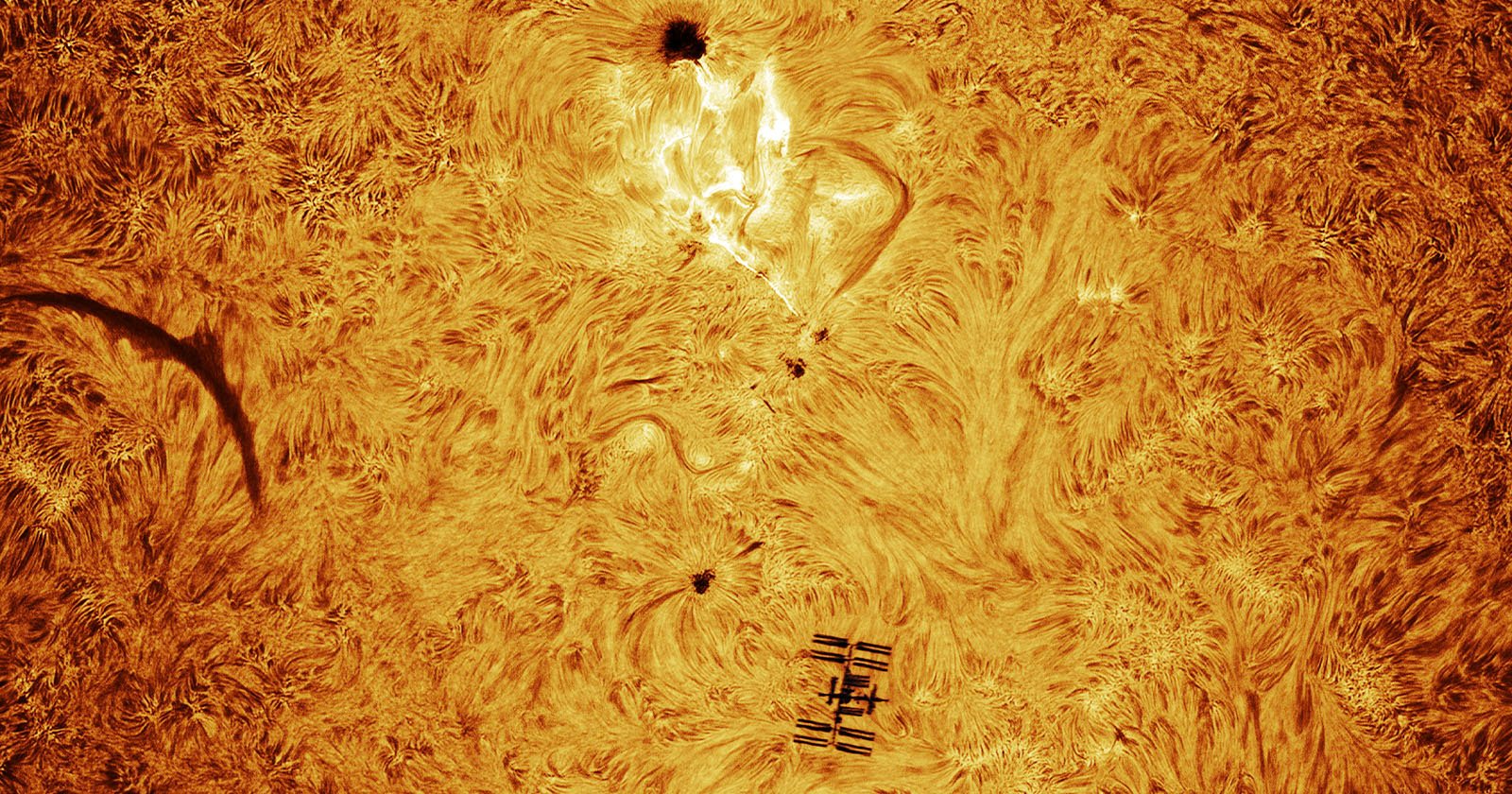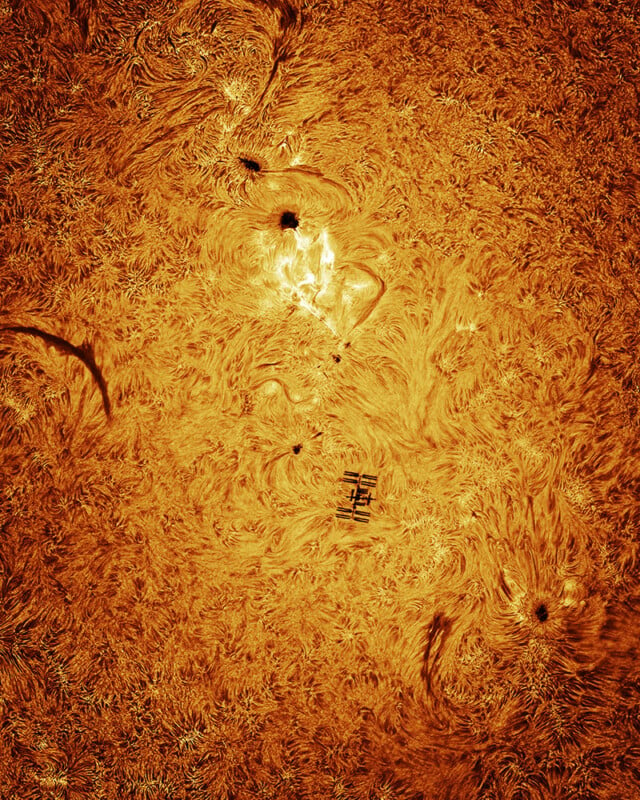
Check out our latest products

Astrophotographer Andrew McCarthy captured a “once in a lifetime shot” on Sunday when the International Space Station (ISS) crossed the Sun just as a solar flare erupted from the star’s surface.
McCarthy tells PetaPixel that it is “by far the best solar transit photo I have taken” and the solar flare — an unpredictable intense burst of energy and radiation — is the “icing on the cake”. It also might be the only photo in existence of the ISS and a solar flare in the same frame.
Feeling the Heat
To get the shot, McCarthy had to drive out into the middle of the desert so he would have the right angle to see the ISS transiting the Sun. The ambient temperature reading on his camera peaked at a sweltering 129 degrees Fahrenheit (54 degrees Celsius).
“To get this shot, I risked heatstroke by traveling during an excessive heat warning,” he explains. “I had to bring several ice packs to put under my computers and sensitive electronics and run thermoelectric coolers on my cameras. I brought an entire cooler full of water and managed to drink all of it!”

McCarthy used an Espirit 150 telescope and an Apollo-M Max to capture the transit of the ISS — which is currently home to seven astronauts. The telescope is modified to allow for safe photography of the Sun and although he captured the celestial event simultaneously with other cameras and telescopes, the main image was captured by the Espirit.
“I use a single photo as the ‘master’ and then mask in stacked versions of both the Sun and the ISS to clean up noise and sharpen things,” he writes on X.
Capturing the ISS transiting the Sun requires a lot of planning. Photographers must find the exact date, time, and location where a transit will be visible as the ISS is only in front of the Sun for less than one second. Websites like the ISS Transit Finder come in handy. Typically, a photographer will start shooting in high burst mode about one second before the transit so they don’t miss it.
But McCarthy is no stranger to pulling off incredible feats of astrophotography; he has previously taken a 400-megapixel image of the Sun made up of 100,000 photos, a crystal clear picture of the Andromeda Galaxy, and the ISS transiting the Moon.
McCarthy has labeled his creation Kardashev Dreams as it “represents the humble beginnings as our civilization grows”. He has made it available as a limited edition print on his website.
More of McCarthy’s work can be found on his Instagram, X, Facebook, and website.
Image credits: All photos by Andrew McCarthy.

![[2025 Upgraded] Retractable Car Charger, SUPERONE 69W Car Phone Charger with Cables Fast Charging, Gifts for Men Women Car Accessories for iPhone 16 15 14 13 12, Samsung, Black](https://i1.wp.com/m.media-amazon.com/images/I/61SaegZpsSL._AC_SL1500_.jpg?w=300&resize=300,300&ssl=1)



![[True Military-Grade] Car Phone Holder【2024 Stronger Suction & Clip】 Universal Cell Phone Holder for Car Mount for Dashboard Windshield Air Vent Long Arm Cell Phone Car Mount Thick Case,Black](https://i2.wp.com/m.media-amazon.com/images/I/715PBCuJezL._AC_SL1500_.jpg?w=300&resize=300,300&ssl=1)
![[エレコム] スマホショルダー ショルダーストラップ 肩掛け ストラップホールシート付属 丸紐 8mm P-STSDH2R08](https://i3.wp.com/m.media-amazon.com/images/I/51BMFf06pxL._AC_SL1500_.jpg?w=300&resize=300,300&ssl=1)







